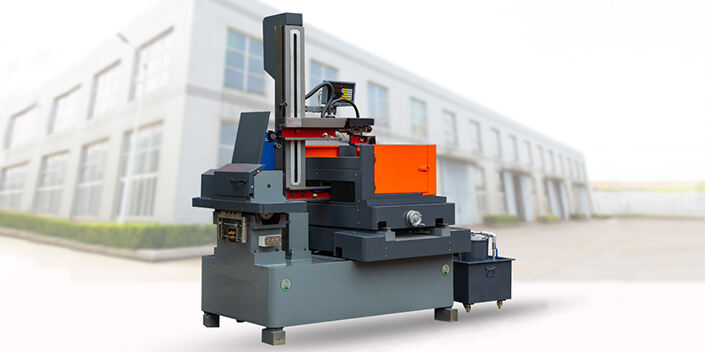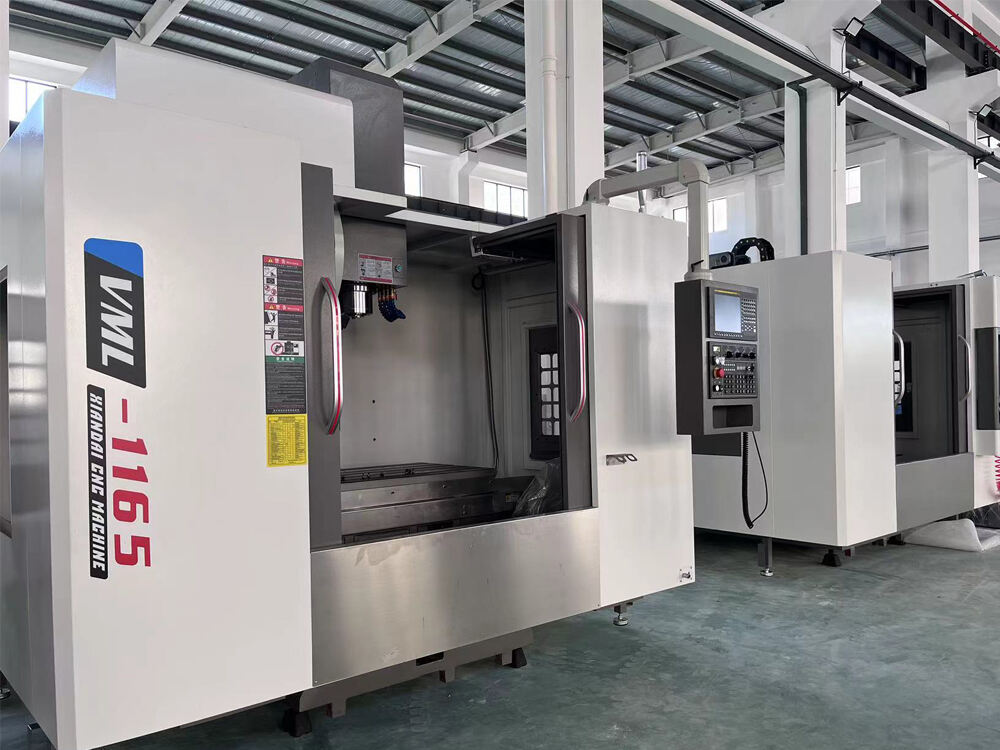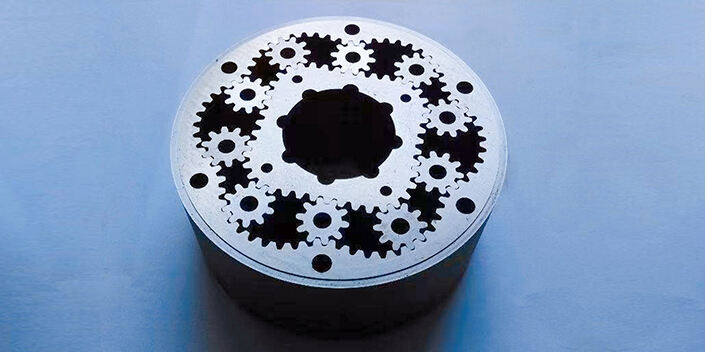Understanding Wire EDM Machines
Wire EDM, also known as Electrical Discharge Machining, works by using controlled sparks to cut through materials with exceptional accuracy. This technique has become really important in manufacturing because it can handle complex shapes and deep cavities without needing extra heat treatment steps after cutting. The benefits are huge for industries where getting measurements right matters most. Think about aerospace components that need to fit together perfectly, tiny parts for medical implants, or specialized tools used in mold making. These applications demand tolerances so tight that traditional methods just won't cut it literally.
Wire EDM works through a sophisticated process involving a thin wire as an electrode, which erodes the material by means of electrical discharges. Here's a simplified breakdown of how the wire EDM process functions:
1. Setup
The wire, usually brass or coated copper, is routed through the workpiece while submerged in a dielectric fluid like deionized water.
2. Role of Dielectric Fluid
This fluid acts as an insulator, cooling the work area and removing eroded particles from the cutting zone, which helps to maintain precision and cleanliness.
3. Precision Control
Using a CNC system, the path and tension of the wire are meticulously controlled to achieve the desired shapes. The wire is moved along predetermined paths to perform accurate cuts, crucial for producing complex shapes and intricate designs with minimal distortion.
Wire EDM machines thus represent a pivotal technology in modern manufacturing, offering unmatched abilities in cutting intricate designs in tough materials.
Advanced Features of Wire EDM Machines
Wire EDM machines have built a reputation for being able to cut with incredible accuracy, allowing manufacturers to produce really intricate shapes while keeping those tight tolerances intact. For industries where mistakes just won't cut it, such as aerospace components or parts used in cars, this level of precision matters a lot. We're talking about situations where even tiny errors could spell disaster down the line. What sets wire EDM apart is how it handles complicated shapes without much room for error at all. That's why so many shops rely on these machines when making precision parts that need to fit together perfectly every single time they come off the production line.
Wire EDM machines today come with pretty advanced control systems that give operators much better control over their processes. Most models now handle data processing as they go along and automatically tweak settings when needed, making it easier to keep an eye on everything and change parameters without stopping work. These improvements really help when dealing with different materials or unexpected changes during cutting, which cuts down on machine downtime and keeps product quality consistent across batches. What makes these systems stand out is how easy they are to use. The interfaces have been designed so even newer technicians can get up to speed quickly compared to older machines where setup was a nightmare of complicated menus and manual adjustments.
Wire EDM machines are getting much better thanks to automation and efficiency upgrades, which cut down on the need for hands-on work. These machines now run on programmable logic controllers or PLCs, something that really boosts how productive they are overall. Studies show that when companies implement this kind of automation, they often see their productivity jump by around 30 percent. The benefits go beyond just faster production times too. Less room for mistakes means higher quality products come out consistently, so manufacturers can keep up with growing orders without sacrificing precision. For many shops, adding automated features to their Wire EDM equipment isn't just nice to have anymore it's becoming essential for staying competitive in today's manufacturing landscape.
The Role of Wire EDM in Precision Engineering
Wire EDM plays a key role in precision engineering across aerospace and automotive manufacturing. The technology really boosts what these industries can achieve because it cuts materials with much greater accuracy than older methods allow. Take jet engines for example. Research published in the Journal of Manufacturing Processes showed that wire EDM creates better tolerances and smoother surfaces on those tiny, complicated parts inside engines. This matters a lot since even small imperfections can affect how well planes fly or worse, compromise safety. In cars too, manufacturers rely on wire EDM to make transmission parts with all sorts of complex shapes. These components need to fit together perfectly according to strict specs. Industry insiders keep pointing out that this kind of precision isn't just nice to have it's essential for keeping vehicles running reliably while meeting safety requirements.
Wire EDM plays a vital role in medical device manufacturing when it comes to crafting complicated shapes and sticking to those tough regulatory rules. The technology delivers exceptional precision along with smooth surfaces, making it possible to create all sorts of detailed parts like surgical tools and implantable devices. Take orthopedic implants for instance they need really intricate designs to function properly within the body. Because Wire EDM cuts with such accuracy, manufacturers know their products will pass those rigorous quality checks set forth by organizations like the FDA across different production settings. For hospitals and clinics relying on these components day after day, getting parts right matters immensely since even small errors could mean serious consequences for patients undergoing treatments or surgeries.
Comparison of Wire EDM with Other Machining Techniques
Wire EDM really shines compared to other machining approaches because it can produce those super fine details and works with all sorts of materials. Regular machining techniques like milling and turning just don't hold up when faced with complicated designs. They struggle to maintain precision, but Wire EDM cuts through materials using electrical sparks that hit targets with incredible accuracy. We see this technology getting used a lot where tiny details matter most. Think about the complicated shapes needed for parts inside jet engines or the minute features required for things like surgical tools. What makes Wire EDM so valuable is that it handles already hardened materials without needing extra heat treatments first something that gives traditional methods quite a headache.
Wire EDM really shines when dealing with tough materials that give traditional machining headaches. Take hardened tool steel or carbide for instance these materials basically laugh at regular cutting tools because they're so tough. But Wire EDM handles them just fine thanks to its unique non contact approach. Since there's no actual physical contact between the wire and workpiece, the tool doesn't wear down nearly as fast. This matters a lot when working with materials that either cost a fortune to machine or simply cannot be cut using standard techniques. Automotive manufacturers and aerospace companies especially appreciate this advantage when creating parts with intricate shapes and tight tolerances. These industries need components that meet exact specifications, and Wire EDM delivers what other methods just cant match.
Advantages of Advanced Wire EDM Machines for Productivity
Wire EDM machines today boost shop productivity thanks to their smart features that cut down processing time and speed things along. Shops report getting work done faster because these modern systems come equipped with better controls and automated functions. Take the iWire system for instance it adjusts parameters on the fly while the intelligent spark protection keeps the process stable even during tricky cuts. This means fewer interruptions when something goes wrong, so operators spend less time fixing problems and more time actually producing parts. Machine shops adopting this tech find themselves taking on bigger orders and tackling complicated geometries that would have been impractical before. The bottom line is clearer efficiency across the board, which translates directly into higher output without sacrificing quality standards.
One major benefit of using advanced Wire EDM machines lies in cutting down both material waste and overall operating expenses. These machines cut with such precision that there's hardly any scrap left over after the job, which obviously means real money saved at the end of the day. Industry studies point to Wire EDM being economically smart over time, mainly because they require less setup work and leave behind far less wasted raw materials compared to other methods. For shops trying to keep costs under control while still maintaining green manufacturing standards, Wire EDM technology stands out as an excellent option. Many shop owners report seeing noticeable improvements in their bottom line once they switch to these systems, making them increasingly popular across various manufacturing sectors.
Challenges and Solutions in Wire EDM Technology
Wire EDM tech has some real drawbacks despite being super precise. The biggest issue comes from electrode wear that gradually messes up the machining accuracy as time goes on. Maintenance requirements also pose problems since these machines need regular servicing that stops production and eats into budgets. This becomes especially frustrating because EDM machines are supposed to deliver such tight tolerances. A tiny deviation during maintenance downtime can ruin entire batches of parts, making the whole operation less efficient than it should be.
There are ways to tackle these problems head on. For starters, cutting down on maintenance expenses starts with proper training for techs so they know how to do basic upkeep and fix small issues themselves. When technicians get this kind of hands on knowledge, machines tend to last longer and spend less time sitting idle in the workshop. Another good move is bringing in smart diagnostic equipment that spots potential trouble spots before they turn into major headaches. These modern tools keep wire EDM systems running smoothly and accurately, which means better quality work comes out consistently without all those unexpected breakdowns that eat into the bottom line over time.
Future Trends in Wire EDM Machining
Wire EDM machining's future looks bright thanks to new tech developments, especially improvements in CAD/CAM software that bridge the gap between design and production. Modern software keeps getting smarter, letting engineers create really detailed designs that actually work when it comes time to manufacture them. When manufacturers integrate things like simulation tools into their workflow, they catch mistakes early on before cutting even starts, which saves both time and materials. Take virtual simulations for example they let operators test different wire paths and tweak machining settings without wasting precious resources. This kind of preparation makes all the difference in getting accurate results while keeping costs down across the board.
Looking ahead, automation and artificial intelligence seem set to transform Wire EDM machining practices across the board. Many industry insiders believe we're moving toward completely automated systems where humans don't need to monitor every step, something that should boost both productivity and creative possibilities in manufacturing. Recent studies point out how AI is becoming increasingly valuable for anticipating when machines need maintenance and fine-tuning their performance parameters. This kind of smart technology application means Wire EDM shops can run smoother day after day while spending less money on repairs and waste materials. The changes coming down the pipeline for Wire EDM operations will probably be quite dramatic, as these technologies take center stage in making machines work better and spend less time sitting idle between jobs.
Table of Contents
- Understanding Wire EDM Machines
- Advanced Features of Wire EDM Machines
- The Role of Wire EDM in Precision Engineering
- Comparison of Wire EDM with Other Machining Techniques
- Advantages of Advanced Wire EDM Machines for Productivity
- Challenges and Solutions in Wire EDM Technology
- Future Trends in Wire EDM Machining





